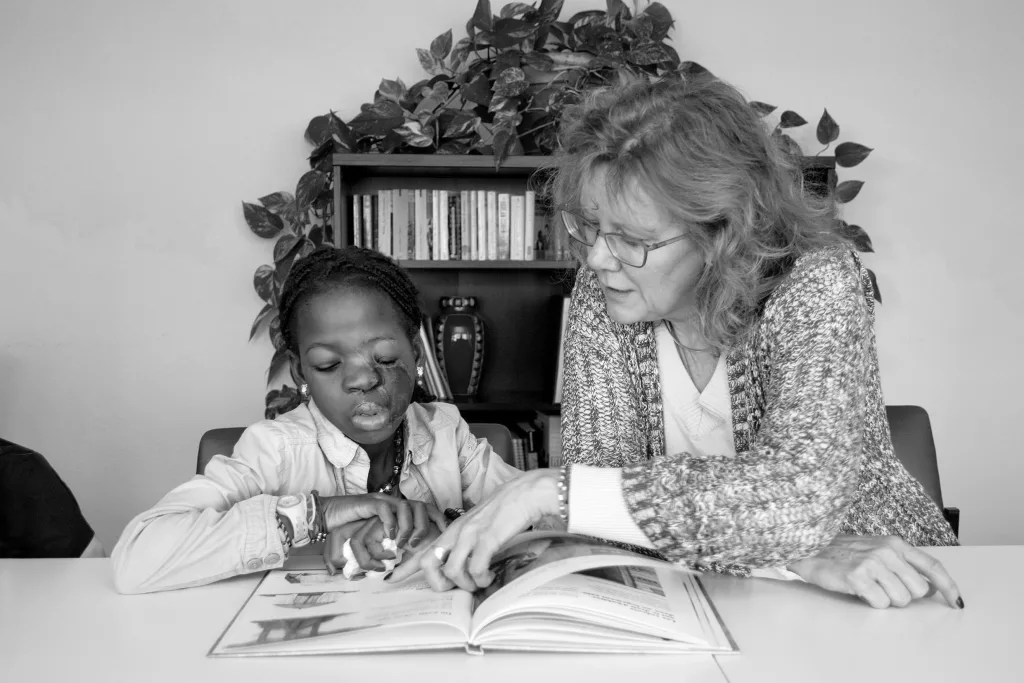Sentinelles welcomes the WHO’s decision

On 15 December, the World Health Organisation (WHO) announced the inclusion of noma (cancrum oris or gangrenous stomatitis) in its official list of 21 neglected tropical diseases (NTDs). Edmond Kaiser, the founder of Sentinelles, became involved over 35 years ago in the fight against noma and the inclusion of this disease on the WHO’s official list. The Fondation Sentinelles has been active with a noma programme since 1990 in Burkina Faso and since 1992 in Niger. It has treated almost 2,000 children suffering from noma.
Prilly, 18 December 2023 – This historic WHO decision was recommended by the 17th meeting of the Strategic and Technical Advisory Group for Neglected Tropical Diseases (STAG-NTD). Noma is a serious gangrenous disease of the mouth and face that mainly affects young malnourished children (aged between 2 and 6) in regions of extreme poverty. It begins with inflammation of the gums which, if not treated in time, spreads rapidly to destroy facial tissues and bones. It often leads to death, with survivors suffering severe disfigurement.
Sentinelles has been fighting for this inclusion since 1989
The first information session on noma took place during the World Health Assembly in 1989, following a plea to the WHO by the founder of Sentinelles, Edmond Kaiser.
But it was back in 1969 that Edmond Kaiser, the founder of Sentinelles, discovered a child with a mutilated face in the hospital in Huancayo, in the Peruvian Andes, suffering from noma, a disease that was unknown to doctors at the time. With an indelible memory of this child mutilated by this unknown disease, Edmond Kaiser later travelled to Ouahigouya in Burkina Faso to visit the centre for severely malnourished children opened by Sentinelles in 1987. It was there that he again met children suffering from the same disease. Very often the victims of rejection by their families and lacking appropriate medical assistance, they remain in extreme physical and moral distress.
Sentinelles programmes
The Burkina noma programme was born: the Sentinelles reception centre and offices were set up in Ouagadougou. Local doctors informed Edmond Kaiser of the large number of children suffering from noma in the Zinder region of Niger. A Presidium employee was immediately sent on a mission to Niger in September 1992 to look for these children. As a result of this mission, 35 children were found within a 30 km radius and their care began, thus launching the noma programme in Niger.
Sentinelles opened its noma programmes in Burkina Faso in 1990 and in Niger in 1992. Nearly 2,000 children suffering from noma have been cared for through awareness-raising projects, medical and social monitoring, care and surgery to repair the after-effects of noma and other facial pathologies.
Just under 500 children have been transferred to Switzerland since 1990 for major surgery that would be difficult to perform locally. They are cared for by the HUG’s reconstructive surgery department and stay at the Terre des hommes Valais centre in Massongex for post-operative follow-up. At the moment, two children from Niger suffering from noma are staying at the Maison.
As Marlyse Morard, Director of the Fondation Sentinelles, points out: “Sentinelles has been fighting tirelessly for 35 years to have this disease recognised. We support survivors through medical and social care. We are constantly raising awareness to prevent the disease and detect it early. This inclusion by the WHO in the official list of neglected tropical diseases gives hope to children affected by noma”.
